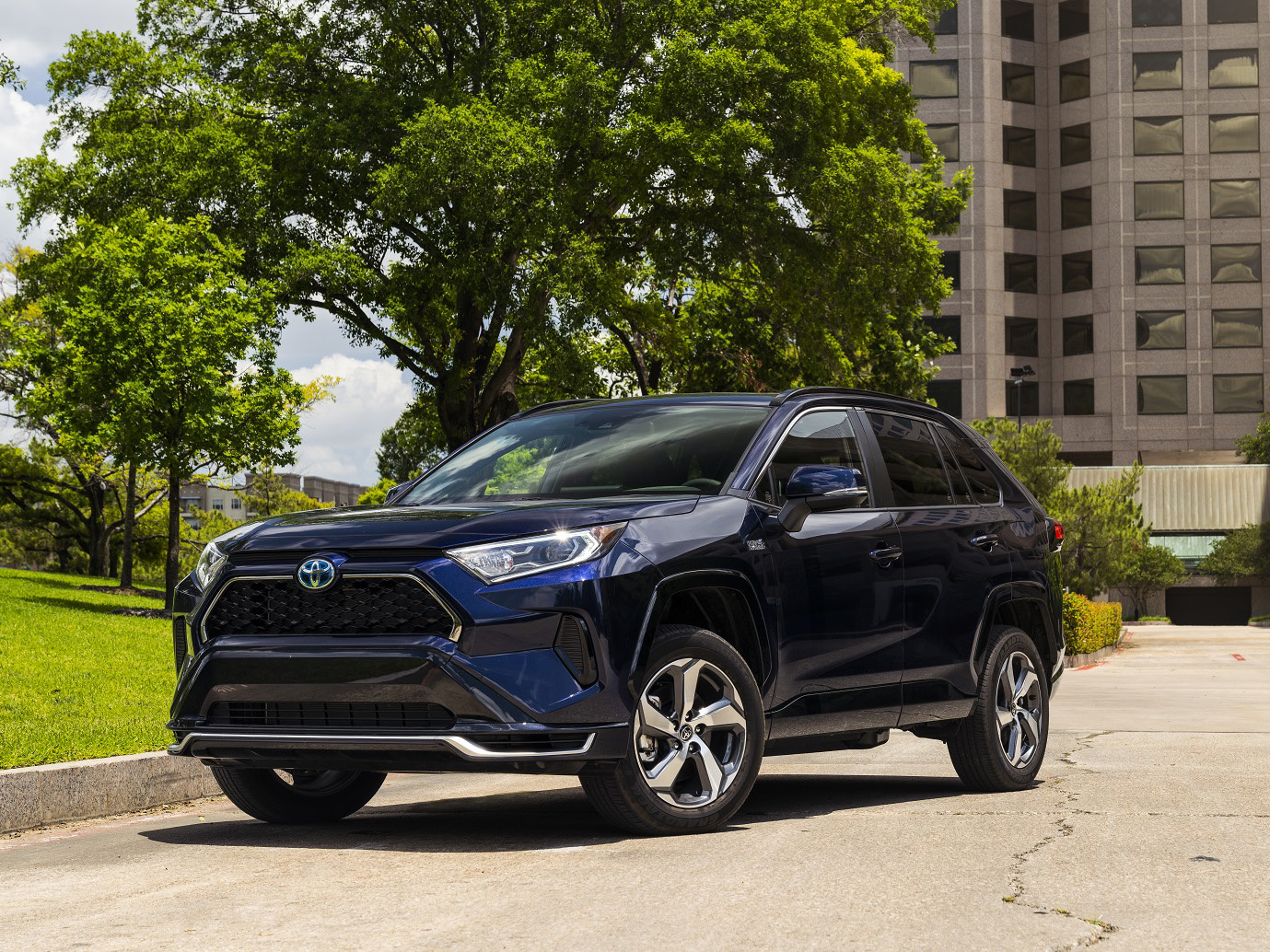The Toyota RAV4 is not a great SUV. It is perfect suitable and serviceable as a daily driver-slash-mommy hauler. That doesn’t make it great. If it were great, its seats would be more comfortable, its engine would be more powerful, and less road noise would be passed into the cabin. Oh, and that terrible grinding noise that the RAV4 Hybrid makes when it’s running in EV mode would be changed to something that doesn’t sound like the car is malfunctioning.
That being said, there are some excellent things about the RAV4. It has a long list of standard features, including safety technology, that puts most other automakers with entries in the compact SUV category to shame. The RAV is fuel-efficient in every variant and comes with gobs of cargo space. It’s also insanely reliable.
The RAV4 Prime has a few distinguishing exterior features but is mostly the same as the traditional RAV4.Photo courtesy of Toyota Motor Sales U.S.A. Inc.
Toyota now makes the SUV in three variants: the gasoline-only RAV4, the traditional hybrid RAV4 Hybrid, and the RAV4 Prime, a plug-in hybrid (PHEV). The RAV4 Prime is designed to be the company’s most fuel-efficient and also highest-performing RAV4. It achieves said goal in spades.
The2021 Toyota RAV4 Prime has a 2.5-liter four-cylinder engine and an electric motor that generate a combined 302 horsepower. That’s 99 more horsepower than the RAV4 and 83 more than the RAV4 Hybrid. Sure, the RAV4 Prime is heavier due to its 18.1-kilowatt-hour lithium-ion battery, but that stored up power waiting for the touch of the accelerator makes the RAV4 Prime downright peppy off the line.
It delivers 42 miles of all-electric range and 600 miles of overall range. This is good for 94 MPGe and 38 mpg (when running as a traditional hybrid). It is nearly as fuel-efficient as the Ford Escape PHEV, the leader in the segment.
The RAV4 Prime is a plug-in hybrid, which means it runs on both gasoline and battery power.Photo courtesy of Toyota Motor Sales U.S.A. Inc.
That all-electric range means that the RAV4 Prime runs its internal combustion engine less often. That’s a good thing. It means less engine noise is passed onto the cabin. It also makes the drive experience more fun (a feature vehicles in the segment are frequently lacking), even when using the SUV as a more traditional hybrid and eschewing the plug-in feature, which limits the amount of time it can run on all-electric mode.
But at its core, the RAV4 Prime can’t escape its roots. Toyota hasn’t changed the interior of the RAV4 much with the Prime model. It contains the same hardy surfaces and rubberized elements that make the RAV4 so livable for families. There’s isn’t much in the way of cheapness-for-the-sake-of-lightweighting like what is in the Prius, and that’s a good thing.
However, the seats remain uncomfortable and the 8-inch infotainment touch screen is starting to look outdated compared to what the competition offers. There’s likely a fix coming for this, perhaps for the 2023 model year as the RAV4 nears its generational midpoint.
The RAV4’s interior isn’t as plush as what you’ll find in Nissans and Mazdas.Photo courtesy of Toyota Motor Sales U.S.A. Inc.
But, most people won’t be as fixated on the interior as they are on the drive. And, the drive is splendid – genuinely enjoyable. I just wish for the $40,000-ish price tag it was nicer to be in while driving.
But don’t worry about the price. You provably can’t buy one anyway. Due to battery production constraints, the supply of the RAV4 Prime is VERY limited. However, if you do find one available, and you’re in the market for the RAV4, do take it for a spin. You’ll probably be surprised with how much you like it.








